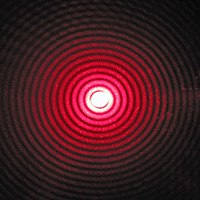
Photo from wikipedia
Physical modeling of musical instruments is of great interest, both due to the interpretation of the parameters that make the model as similar to reality as possible, and because of… Click to show full abstract
Physical modeling of musical instruments is of great interest, both due to the interpretation of the parameters that make the model as similar to reality as possible, and because of the faithful sound synthesis. In this paper we will focus on the modeling of percussion instruments and more concretely drums consisting of a vibrating membrane and a rigid body. One recently published physical model [S. Bilbao and C. J. Webb, J. Audio Eng. Soc. 61 (2013) 737-748] uses finite difference time domain schemes to solve both the system of equations describing the dynamics of the membrane, and the influence of the surrounding air. The main drawback of that approach is the growth of computation cost with the scale of the problem. A new approach is suggested here where an edge diffraction-based method [A. Asheim, U. P. Svensson, J. Acoust. Soc. Am. 133 (2013) 3681-3691] is used to compute both the air loading on the surface and the sound radiation. The finite difference time domain method is used in this approach too ...
Journal Title: Journal of the Acoustical Society of America
Year Published: 2017
Link to full text (if available)
Share on Social Media: Sign Up to like & get
recommendations!